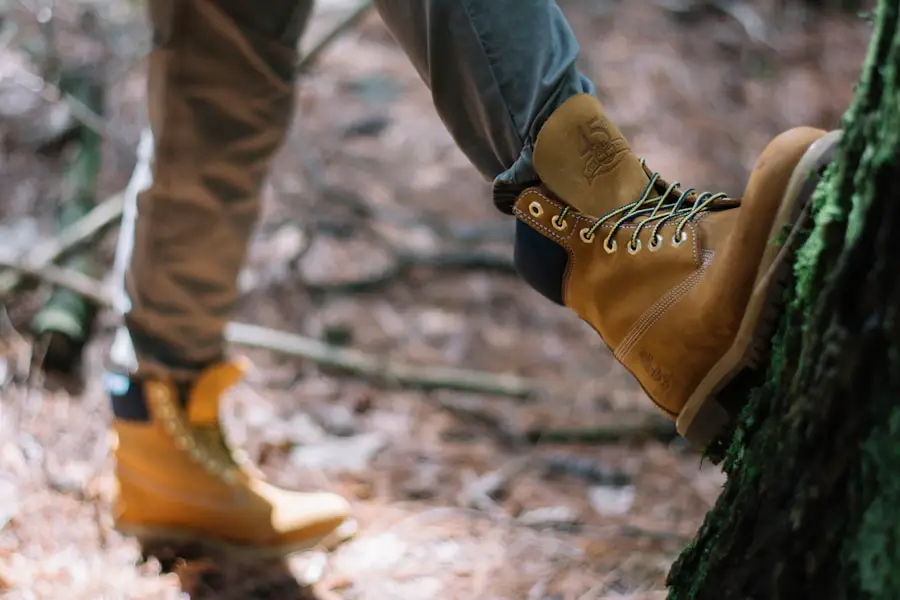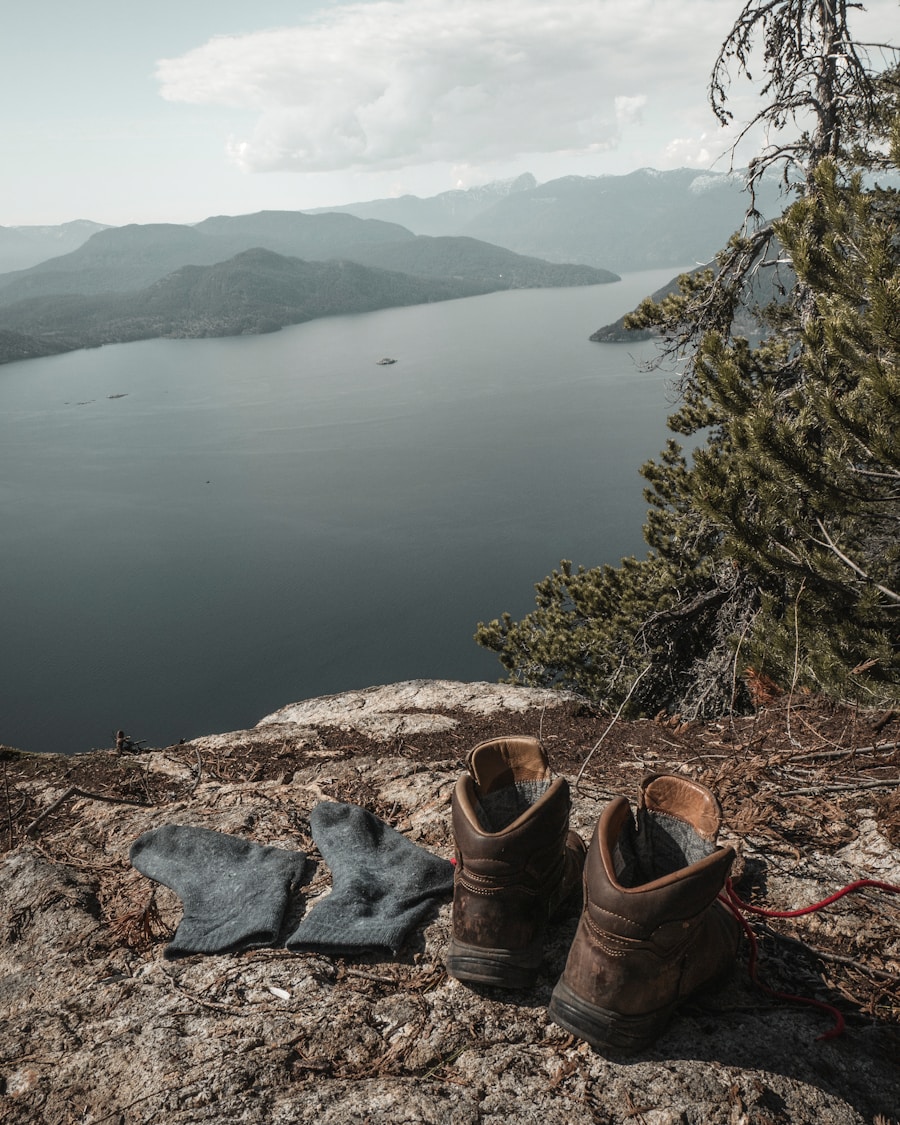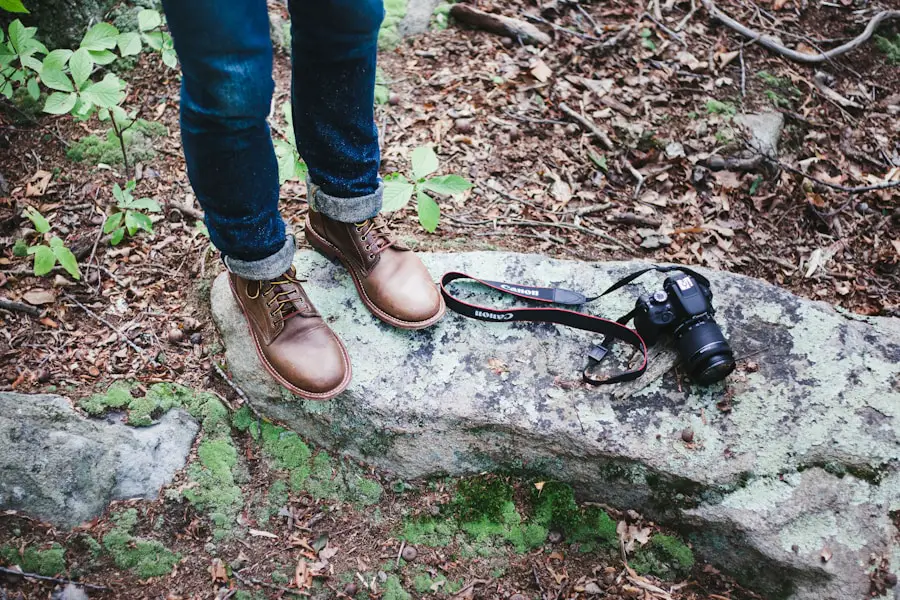Logger boots are a specialized type of footwear designed primarily for the logging industry, where workers face rugged terrain and hazardous conditions. These boots are characterized by their robust construction, which typically includes features such as steel toes, waterproof materials, and heavy-duty soles. Logger boots have evolved over the years, becoming a staple not only for loggers but also for outdoor enthusiasts who require durable footwear for various activities, including hiking.
The origins of logger boots can be traced back to the early 20th century when they were developed to meet the demanding needs of lumberjacks who worked in challenging environments. As the logging industry grew, so did the technology and materials used in these boots, leading to innovations that enhance both safety and comfort. The design of logger boots is heavily influenced by the requirements of the logging profession.
They are built to withstand the rigors of working in forests, where uneven ground, sharp objects, and wet conditions are commonplace. This has led to the incorporation of features such as high ankle support, which helps prevent injuries from twisting or rolling an ankle on uneven surfaces. Additionally, logger boots often come with a waterproof lining to keep feet dry in wet conditions, making them suitable for various outdoor activities beyond logging.
As more people venture into the wilderness for hiking and other outdoor pursuits, logger boots have gained popularity among hikers seeking reliable footwear that can handle tough terrains.
Key Takeaways
- Logger boots are a type of work boot designed for loggers and other outdoor workers, but they can also be used for hiking.
- Logger boots are different from hiking boots in terms of their construction, support, and protection features.
- Logger boots offer excellent ankle support, protection from sharp objects, and insulation against cold and wet conditions.
- Logger boots are comfortable and durable for hiking, providing stability and protection on rugged terrain.
- Logger boots offer superior traction and grip on hiking trails, making them a reliable choice for outdoor enthusiasts.
Differences Between Logger Boots and Hiking Boots
While both logger boots and hiking boots are designed for outdoor use, they serve different purposes and are constructed with distinct features that cater to their respective activities. Logger boots are primarily designed for heavy-duty work environments, emphasizing protection and durability over lightweight comfort. They typically feature a thicker sole and a more rigid construction to provide stability and support when navigating rough terrain or carrying heavy loads.
In contrast, hiking boots are designed with a focus on comfort and flexibility, allowing for greater ease of movement over long distances. Hiking boots often incorporate lighter materials and cushioning systems that prioritize comfort during extended wear. Another significant difference lies in the tread patterns of the soles.
Logger boots usually have deep lugs that provide excellent traction on slippery or uneven surfaces, which is essential for workers who may encounter mud, logs, or other obstacles in the forest. Hiking boots, while also designed for traction, often feature a more varied tread pattern that balances grip with the need for smooth transitions on different types of terrain. This difference in tread design reflects the specific demands of each activity; loggers need maximum grip in unpredictable environments, while hikers require versatility to adapt to changing trail conditions.
Support and Protection Offered by Logger Boots

One of the standout features of logger boots is their exceptional support and protection. The high ankle design is particularly beneficial for individuals working in environments where they may encounter uneven ground or heavy equipment. This added support helps stabilize the ankle joint, reducing the risk of sprains or fractures that can occur when navigating rocky or unstable surfaces.
Additionally, many logger boots come equipped with steel toe caps that protect against falling objects—a crucial feature for those working in logging or construction settings. This level of protection is not typically found in standard hiking boots, which may prioritize weight savings over robust safety features. Moreover, logger boots often incorporate reinforced materials in critical areas such as the toe box and heel to enhance durability.
This reinforcement is essential for individuals who may be exposed to sharp tools or debris while working outdoors. The waterproofing technology used in many logger boots also contributes to their protective qualities, ensuring that feet remain dry even in wet conditions. This is particularly important for those who may be hiking through streams or muddy trails, as wet feet can lead to discomfort and blisters over time.
The combination of support and protection makes logger boots an appealing option for hikers who prioritize safety in challenging environments.
Comfort and Durability of Logger Boots for Hiking
| Brand | Comfort Rating | Durability Rating |
|---|---|---|
| Timberland | 4.5 | 4.8 |
| Danner | 4.7 | 4.5 |
| Wolverine | 4.3 | 4.6 |
| Carolina | 4.4 | 4.7 |
When it comes to comfort, logger boots have made significant strides in recent years. While traditionally known for their rigidity, many modern logger boots now incorporate advanced cushioning technologies that enhance comfort during extended wear. Features such as padded insoles and moisture-wicking linings help keep feet comfortable and dry, even during long hikes.
However, it is essential to note that logger boots may still feel stiffer compared to dedicated hiking boots due to their construction aimed at providing maximum support and protection. Durability is another hallmark of logger boots that appeals to hikers. Constructed from high-quality leather or synthetic materials, these boots are designed to withstand harsh conditions without compromising performance.
The heavy-duty soles are often made from rubber compounds that resist wear and tear from rough terrains, ensuring that the boots can endure multiple seasons of use without significant degradation. For hikers who frequently traverse rocky trails or encounter abrasive surfaces, the durability of logger boots can be a significant advantage, as they are less likely to suffer from premature wear compared to lighter hiking footwear.
Traction and Grip of Logger Boots on Hiking Trails
Traction is a critical factor when selecting footwear for hiking, and logger boots excel in this area due to their specialized sole designs. The deep lugs found on logger boot soles provide excellent grip on various surfaces, including mud, gravel, and wet rocks. This feature is particularly beneficial for hikers who may encounter slippery conditions or steep inclines during their adventures.
The aggressive tread pattern allows for confident footing, reducing the likelihood of slips and falls on challenging trails. In addition to their lug patterns, many logger boots also feature slip-resistant outsoles that enhance grip on slick surfaces. This is especially important when hiking in areas prone to rain or snow, where maintaining traction can be a matter of safety.
Hikers can feel secure knowing that their footwear is designed to handle unpredictable conditions effectively. While hiking boots also offer good traction, the specific design elements of logger boots make them particularly well-suited for rugged terrains where superior grip is essential.
Considerations for Using Logger Boots for Hiking

Weight and Fatigue
Logger boots are often heavier than hiking boots due to their robust construction and added protective features. This extra weight can become noticeable during long hikes, potentially leading to fatigue over time. Hikers should evaluate their own comfort levels with weight when deciding whether logger boots are suitable for their needs.
Breathability and Climate
Many logger boots prioritize waterproofing and insulation over ventilation, which can lead to overheating during warmer hikes. Hikers should evaluate the climate and conditions they will be facing; if they anticipate hot weather or prolonged exposure to sun, they may want to consider alternatives that offer better breathability without sacrificing too much protection.
Fit and Break-In Period
Proper fit is crucial; logger boots may require a break-in period due to their stiffer construction, so it’s advisable to try them on with the socks you plan to wear while hiking.
Alternatives to Logger Boots for Hiking
For those who find that logger boots may not meet all their hiking needs, there are several alternatives worth considering. Traditional hiking boots come in various styles—ranging from lightweight day hikers to more robust backpacking models—each designed with specific features tailored to different types of trails and conditions. Lightweight hiking shoes offer increased flexibility and breathability while still providing adequate support for moderate trails.
These options are ideal for day hikes or less demanding terrains where comfort and agility are prioritized. Trail running shoes have also gained popularity among hikers looking for a lightweight alternative that allows for quick movement on trails. These shoes typically feature aggressive tread patterns for traction but lack the ankle support found in both logger and traditional hiking boots.
For those who prioritize speed and agility over heavy-duty protection, trail runners can be an excellent choice on well-maintained paths or during warmer months when breathability is essential.
Are Logger Boots Good for Hiking?
In summary, whether logger boots are suitable for hiking largely depends on individual preferences and specific hiking conditions.
Their robust construction offers unparalleled support and protection against rugged terrains while providing excellent traction on slippery surfaces. However, potential drawbacks such as weight and breathability should be carefully considered before making a decision.For hikers who frequently navigate challenging environments or require additional safety features, logger boots can be an excellent choice. Ultimately, it’s essential for each hiker to assess their unique needs based on the type of trails they plan to explore and their personal comfort preferences. By weighing the advantages and disadvantages of logger boots against other available options, outdoor enthusiasts can make informed decisions that enhance their hiking experiences while ensuring safety and comfort on the trails.
If you are considering using logger boots for hiking, you may want to check out this article on the best time to travel to Cancun. Understanding the weather conditions and terrain of your hiking destination is crucial when choosing the right footwear. This article provides valuable insights on when to visit Cancun based on weather patterns and tourist crowds, which can help you plan your hiking trip accordingly.
FAQs
What are logger boots?
Logger boots are a type of work boot that is designed for individuals who work in the logging industry. They are known for their high ankle support, sturdy construction, and thick, durable soles.
Are logger boots good for hiking?
While logger boots are designed for rugged outdoor work, they may not be the best choice for hiking. They are typically heavier and less flexible than hiking boots, which can make them less comfortable for long hikes. Additionally, the thick soles may not provide the same level of traction and support as hiking boots.
What are the benefits of wearing logger boots for hiking?
Logger boots offer excellent ankle support and protection, which can be beneficial for hiking on rough terrain. They are also very durable and can withstand heavy use, making them a good option for individuals who frequently hike in challenging environments.
What are the drawbacks of wearing logger boots for hiking?
The weight and stiffness of logger boots can make them less comfortable for long hikes. Additionally, the lack of flexibility in the sole may make it more difficult to navigate uneven terrain. Logger boots may also take longer to break in compared to hiking boots.
What are some alternatives to logger boots for hiking?
Hiking boots are a popular alternative to logger boots for hiking. They are designed specifically for outdoor activities and offer features such as lightweight construction, flexible soles, and superior traction. Trail shoes and hiking sandals are also options for hikers looking for more flexibility and breathability.
